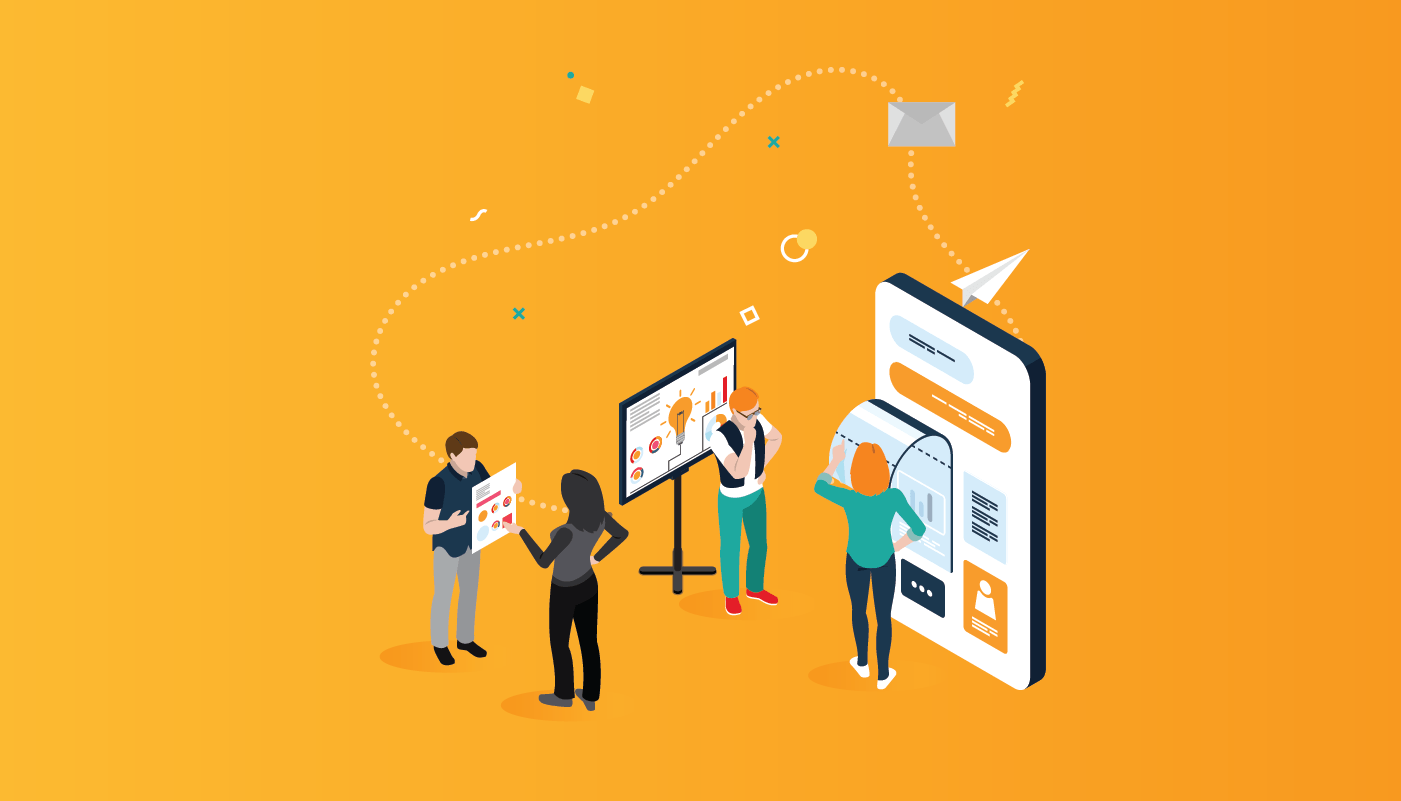
Navigating the Design Thinking Process in Software Product Design
Design thinking has truly transformed the landscape of software product design. It’s like a breath of fresh air, blending creative innovation with a deep, empathetic understanding of what users really need and want. This approach is key in crafting products that do more than just function—they connect and resonate with users.
Let’s dive into the world of design thinking and see how it shapes the journey of software product design.
Introduction to Design Thinking
Imagine design thinking as a voyage deep into the essence of user experience. It’s more than a mere set of steps; it’s a way of thinking that places the user at the very core of everything. This mindset revolves around understanding and prioritizing the user’s needs and experiences above all else. This iterative process ensures that products are not just technically sound but also meet users’ needs effectively.
Empathize: Understanding the User
Empathy is the cornerstone of design thinking. It involves engaging deeply with users to understand their experiences, challenges, and needs. Techniques like interviews, surveys, and direct observation are key to gathering insights. This isn’t about assumptions; it’s about genuine understanding, the kind that forms the foundation of a product that doesn’t just exist but lives and breathes for its users.
Define: Clarifying the Problem
After empathizing with users, the next step is to define the problem clearly. This isn’t about vague statements; it’s about clarity and precision. You take all those insights and crystallize them into a problem statement that acts like a beacon, guiding the entire design process. This clarity ensures that every step taken is in lockstep with what the user needs, not just what we think they need.
Ideate: Exploring Creative Solutions
Ideation is the brainstorming phase where creativity is unleashed. It’s like a celebration of brainstorming where every single idea, no matter how out-there or unusual, is welcomed and considered. This stage is vital for uncovering those brilliant, innovative ideas that aren’t immediately apparent. It’s about exploring every possibility and seeing where it might lead. And yes, this is where software development engineers, with their unique blend of technical know-how and creativity, bring invaluable insights to the table.
Prototype: Bringing Ideas to Life
Prototyping is about turning ideas into tangible solutions. This phase involves creating simple, scaled-down versions of the product or its features. For a software development engineer, this is a critical phase where theoretical designs are transformed into practical, testable products. Prototyping bridges the gap between design and functionality.
Test: Validating the Solution
Testing involves validating the prototypes with real users. It’s about gathering feedback and observing user interactions with the product. This phase often reveals new insights and challenges assumptions, guiding further refinements to the product.
Iterate: The Cycle of Improvement
Design thinking is an iterative process. Based on testing feedback, revisiting and revising previous steps is often necessary. This cycle of iteration is key to refining the product and ensuring it meets user needs effectively.
Merging Tech and Design: A Delicate Dance
In the world of software product design, marrying technology with design isn’t just important—it’s essential. Think of software development engineers as the unsung heroes in this process. They’re the ones who take a design dream and give it bones and muscles, making sure it doesn’t just look good but works like a charm too. Their role is like that of a skilled translator, turning design language into robust, functional technology.
Putting Users Front and Center
At the heart of design thinking is a straightforward idea: everything revolves around the user. This approach is about more than just ensuring functionality; it’s about genuinely stepping into the user’s shoes and attempting to view the world as they do. It involves a deep dive into their lives, grasping their needs and experiences from a personal, inside-out perspective.
Every step, every decision, is guided by one question: “How will this impact the user?” This relentless focus ensures that the end product isn’t just something people can use but something they will love to use.
The Power of Teamwork
Design thinking isn’t a solo sport. It thrives on the collective energy and wisdom of a diverse team. Designers, engineers, stakeholders—they all huddle together, bringing their unique perspectives to the table. This isn’t just about ticking off tasks; it’s about building bridges between different viewpoints, ensuring that every angle is explored and every voice heard. It’s in these vibrant exchanges that the magic of true collaboration is born.
Embracing User Feedback: A Dynamic Process
Adapting to user feedback is like navigating a river; it requires both skill and flexibility. In the design thinking journey, user feedback isn’t just a checkpoint; it’s a compass that guides the way. Being open to critique and ready to pivot or tweak ideas based on what users say ensures that the product isn’t just built for them but evolves with them.
Conclusion: A Journey of Discovery and Innovation
Navigating the design thinking process in software product design is like embarking on an expedition. This journey is like walking a road built on understanding, creativity, technical skills, and a constant drive to make things better. It’s not just about making software that functions well; it’s about creating software that brings joy, that really gets what users need, and that shines in a busy market. It’s about turning a solid idea into an outstanding product.



